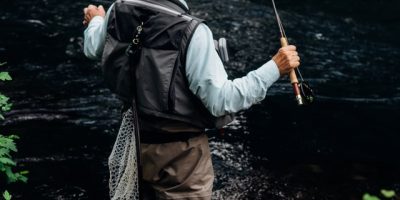Beach fishing is an accessible choice for anglers in most parts of the world. The species can vary from salmon and mullet to adapted, trevally and queenfish, blue salmon, barramundi, and various reef species. No matter where you are in the world, you give yourself a great chance to land a number of species with the best lures for beach fishing in your pack.
Fishing on the beaches is fantastic. All public beaches allow shore fishing, and it is very normal to see people working calm surfing with their poles and cast nets. You can catch most coastal fish such as snook, pompano, tuna, snapper, and redfish from the beach.
| Best Lures For Beach Fishing | Product Image | Rating | Get It Here |
|---|---|---|---|
| Acme Kastmaster Spoon Fishing Lure |  | Check Price | |
| KIKITOY Saltwater Fishing Lures |  | Check Price | |
| Bomber Saltwater Grade Badonk | 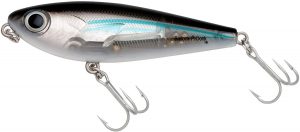 | Check Price |
Most beaches have plenty of parking spaces, pavilions and picnic areas, and several barrier islands and swimming pools. Often a short walk will take you to secluded fishing places with the additional advantage of wildlife views and breathtaking views. The inshore tidal pools or the open water ocean can be fished. You can also enter the outskirts by ferry.
You have easy access to the beach if you stay in a hotel or condo on the side of the ocean. The hotels also offer all sorts of activities and fishing gear, kayaks, jet skis etc. are available for hire.
What’s Beach Fishing?
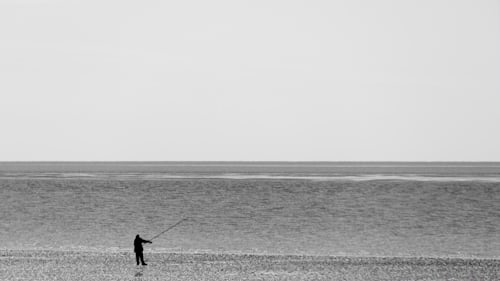
More generally referred to as surf fishing is a type of saltwater angling that includes fishing off the beach or, as the name implies, casting from the sea. It has become a very popular leisure activity because it is open to a wide variety of anglers as there is no need for an expensive boat. What you need is a fishing gear and a beach.
Nothing beats getting your feet wet as you catch a sunset session.
There are a few strategies unique to surfcasting, as the main purpose of the sport is to throw your bait as far as possible to ensure that you can attract a large number of fish. Many common species can be captured on the shoreline, including flounder, albacore tuna, bluefish, redfish, and many more.
Why Is It Famous?
Although most surf anglers prefer to fish while the sun is out, this is also a common nighttime sport. If you head out to the beach after dark, you might see anglers armed with flashlights and headlamps, trying to track the nocturnal feeding patterns of the fish species they want to target.
Beach & Shore Fishing Fishing Gear And Techniques
Before we dive in to the best lures for beach fishing, here are some information you should know.
Rigs
The easiest 2-hook dropper loop rig and the most frequently used rig will allow you to find the bottom fish hiding in the water, for example, snook, pompano, ovine or even sharks.
Fishing Nets
Fishing from the shore and the beach needs equipment to get your bait to where the fish are. Some fishermen have a rod and a reel for each fishing situation-fishing from the shore, fishing from the pier and fishing from the ships. Depending on your budget and the frequency of each fishing circumstance, you have the option of a single all-purpose rod or a variety of specialized rods.
Note that surfcasting involves long rods that are not ideal for fishing off piers or boats. A large 6-foot rod built for pier fishing would not be thrown into the sea. Quite heavy, 10 + foot rods are designed especially for long surfcasting. If you want a rod all around you, go for an 8 foot rod of medium weight.
Fishing Reels
It can’t be said enough to get a decent reel! Better manufactured reels would last 20 years if properly managed, a less costly reel will last a few years-what would you prefer?
Bait Catching
By far, using live bait is the safest way to capture fish! Yeah, artificial lures, spoons, and other contraptions work just fine, but nothing beats fresh bait.
Cast netting for baitfish is a popular activity on the beach and a lot of fun. The beach is also a good place to learn the trick of throwing these nets. Find yourself a vacant beach area and throw it away. Catching bait in the morning on the Gulf can reveal bait schools sparkling in the light when the sun is at your back.
Digging in sand for sand fleas is another common activity for collecting bait. Gathering fiddler crabs or searching for sea worms in the sand is more free bait to collect as you wait for a bite to reach your deck.
Beach Seining is another way to get a live fish, so we’ve dedicated a whole page to help you learn this perfect way to catch fish on the beach.
Surf Casting
Surf casting requires the use of rods and reels for surfing. Rods are generally 10 to 20 feet long and the best reels to be used are those designed for surf casting. The ideal line weight is 15 pounds, which gives you enough strength to pull big fish, but it’s light enough not to get caught by the constant surfing.
Sand spikes are used to hold the rod after throwing the bait. A PVC sand spike sold in stores can be changed by bolting on a 2-foot aluminum tube that helps the spike to remain in place and not to get loose from the crushing waves. Place your sand spike at the edge of the surf by rocking the spike slowly back and forth until it is firmly firm in the sand.
The best bait is what the fish you ‘re about to eat. Popular surf casting bait is sand fleas, shrimp, bait fish and cut bait. While waiting for a hit, you usually see surf anglers digging sand fleas around in the sand. Nothing like a fun new fish. Place sand fleas in a bucket or cooler with moist sand to keep them out of the heat.
Many experienced surf anglers have two or three rods working at the same time. They cast out the first line, put it in the sand spike, then move on to the bait and cast out the second rod. Let’s hope that once the second rod reaches the sand spike, you’ll be reeling with a fish in the first section.
Many beaches are open, but often getting to them can be a challenge. You have to find a parking lot first, then a Beach Access walkway to get to the water.
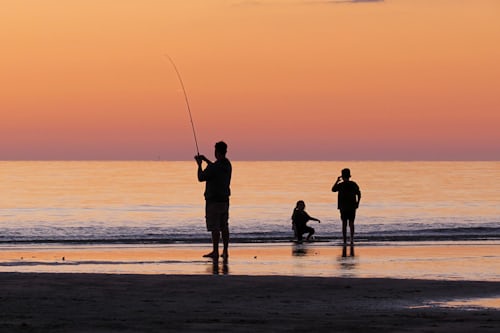
Fishing on the sea
Whether it’s on the coast, at a public or private pier, or under a bridge, you ‘re sure to have good fishing from the shore. It’s not rare for you to see a fisherman on the side of the road as you drive through Florida? If it has water, it’s most likely to have fish.
There are also public docks and piers, either federal, county, town or privately owned, all over the federal. Always check before fishing, some public docks do not allow for fishing. Typically, you can buy bait at the famous fishing piers and most do not need a fishing license.
There are rock jetties where you can find some fantastic fishing and snorkeling. Many cities allow public fishing from jetties with parking and cleaning stations. There are also rock jetties on the beaches that provide a foundation for fish and excellent spots for casting your line.
Fishing from the walls of the sea is very common. Look for places where you can see the river just off the coast; this is where most of the fish can migrate with the tides. Cast your lines close to the structure in these spots for some action packed fishing. Commonly taken from the sea walls are Snook, Spotted Sea Trout (seasonal), Ladyfish, Sheepshead, and a number of unwanted catfish.
A common activity for locals and tourists alike is to dock your boat on a mangrove island and fish from the dock. You need a boat to get to these islands and to learn about the waterways. Often get the information locally before venturing on these outlying islands; many are private so make sure you know before you go.
More Information
Snook and other inshore fish can be found feeding on the sunrise and sunset waves. Wildlife on these barrier islands is spectacular, with turtle tracks and nests, fiddle crabs everywhere, and lots of birds, including bald eagles.
Take a boat to the sandy shore and fish the shorelines, particularly on the tips of the islands where the fish seem to gather during changes of tide. Be sure to use your GPS, nautical map, and marine radio as it’s easy to get lost in mangrove island chains.
One important thing you need to know is to watch your ships. It’s normal for boaters to miss the tide and notice that their boat is “sky high” out of the sea, literally beach. It’s hard to get a boat off the beach and it can do harm to the boat in an attempt to drag it further. You can wait 6 hours for the tide to come in, but why do you take the chance? Checking the boat regularly and pushing it to keep much of it in the water is your best option.
Spearfishing
Anglers who also enjoy diving spearfish on reefs near the sea. This is very popular because many reefs are within walking distance from the shore. You will spot these daring anglers by diving down the flags that are floating behind them.
Kite Fishing
Kite fishing from the shore is not popular, but it’s fun. Kites keep your bait and chum out of the water as much as possible while casting.
Tarpon on the Beach
Tarpon fishing is not just for anglers with boats, you can catch a tarpon from the beach, a bridge or a fish pier because tarpon is an inshore fish that feeds on the normal inshore species such as ladyfish and mullet.
You must have a heavy gear first, or you’re going to waste your time. These giants will weigh 100 pounds, and once they’ve caught up, they ‘re going to hop and make long runs. Getting 350 yards of 30 pounds test will give you plenty of line power to battle. Your leader should be 10 feet with a measure of 100 pounds with a 7/0 hook or the size that suits your bait.
If you’re on a bridge or pier, presume that the Tarpon is immediately below you, circling around the pilings so that you cast out and away from the pilings into the current that’s flowing terms.
Fishing for Tarpon from the beach is a lot simpler, but it takes a lot of effort to get these monsters in. A lot of thread, a lively bait like a mullet or a ladyfish, is going to do the trick if the Tarpon is in the field. Winter months are best in South Florida as Tarpon travels from the cooler north to warmer waters.
Shark Fishing on the beach
Get ready to have some fun! It’s not rare to catch a shark at the beach. Blacktip sharks are very common here. You need large bait chunks, a wire leader line and a long pole to capture the shark. Don’t be surprised when the crowd is fast forming around you as you land a shark; people are really interested in seeing a live shark. You could be an instant star! If you’re going to release the fish, don’t keep it out of the water for too long to show it off.
Beach Fishing Tips and Tricks
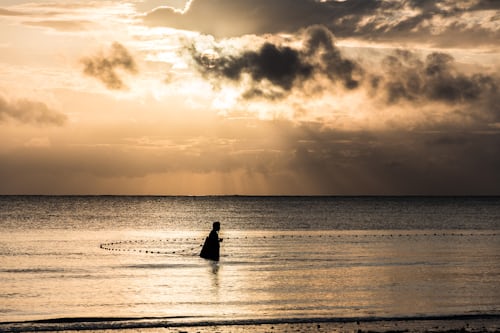
Like beginning a new sport, there’s a learning process you’ve got to go through to achieve success. A little research could go a long way. We’ve put together some of our favorite tips and tricks for new surf anglers to ensure the best chances of capture.
Use the right nodes.
Although you might not know this, knots are one of the most important ties between you and your future capture. If you’ve been depending on the same knot for years now, it may be time to take a second look and try something different to stop losing fish and expensive lures.
Always clean up your gear afterwards.
Saltwater and metal are not combined. The mixture of salt, water and oxygen causes rapid corrosion, leaving untreated metal fishing equipment fragile and weakened after just a few uses in the ocean. If you want to keep your gear in good condition, it’s very important to have a fixed cleaning routine every time you ‘re in saltwater.
If you’re going to be out all day under the heat, make sure you have the right cover.
Many saltwater rods and reels are made of special corrosion-resistant materials, but even periodic maintenance is required. One recommendation is to hold a bucket of fresh water close to your fishing spot. You will use this to dip your reels and lures all day to avoid unnecessary salt build-up.
After your beach day, thoroughly wash all-metal gear with warm water and gentle soap (be sure to take things apart if you need to check for salt build-up in hard to reach areas. Rinse with clean water and dry thoroughly before storing.
Always use the right line when fishing at the beach.
The most widely used lines for saltwater angling are monofilament, braided, and fluorocarbon lines. Anglers typically choose one to the other for a variety of different reasons.
Monofilament lines are a single line of material that is very stretchy and flexible. They are common because they are typically very cheap, perfect for casting out of the spool, and they are easy to tie knots with. But, because of their versatility, they can carry more power.
Braided lines are a very common option because they are very strong and reliable. While they are not the easiest lines to tie knots with and are a little more costly, the design provides little stretch. This makes the line resilient and durable.
Fluorocarbon line is commonly used because it is extremely durable and can withstand a lot of underwater rocks, coral, etc. Another major advantage is the material that is refractive, rendering it invisible to fish.
Use your data to learn more about swells.
Although there is some element of luck when it comes to surfing angling, you can dramatically improve your chances of success by doing some research on the nature of the ocean. Being in the right place at the right time will lead to a lot of fish just waiting to be caught.
Waves and swells decide the behavior of life below. Some species will head closer to shore when swells are high, while others will swim farther out. Strong swells will make the water darker, allowing the fish more protection, which means that more prefer to go closer to the shore to eat.
You’ll want to go to the beach at a time when the catch is likely to be closer to the shore, which also means watching the tides. Since the fish use the tidal power to navigate and eat, the fish are most successful when the tide is high. Their natural prey is always unexposed with a high tide, so it’s a good time to strike.
Don’t use the half-dead bait.
If you’re going to go for live bait rather than lures, you ‘re going to have to take an extra step of care to get the best chance of success. Keeping your bait safe and fresh is super important to attract big fish. The smell, natural look, and movement of live bait make it super enticing, but it’s only if it’s good.
Many anglers want to use lures because it’s a pain to keep bait safe, but it’s not too hard with a few preliminary steps. The most important aspect is to control the water temperature and oxygen level.
You should keep your bait at a temperature range that is close to the water in which you are going to fish. On days when the temperatures are higher and the oxygen levels are lower, add a frozen bottle of water to your bait tub. Water flow is also an essential aspect – add some current to your tub. Not enough to drain the bait, but enough to wash the impurities out of the tank.
About The Best Lures For Beach Fishing

A big benefit of lure fishing is that you can stay mobile and cover a lot of land quickly and easily. A variety of lures will allow you to explore the water column from the surface to the bottom and around any features that may hold fish. There is a wide variety of best lures for beach fishing on the market that can be classified into two different groups, hard and soft lures. A traditional hard lure will be a plug with two or three treble hooks.
A soft lure may be a smooth, flexible latex or rubber body built to be used in conjunction with a jig head. Choosing the right lure for a specific set of circumstances is crucial. You’re also going to need to know how to get the lure to get the best results. Some of the best lures for beach fishing need a little practice in order to produce the most enticing behavior.
The first few steps to success are to fish a balanced gear and to use the right techniques for the right lures. The next move is to “match the hatch” and cover the water column from top to bottom for the target organisms. Bear in mind that the fundamentals of most hunting fish are to feed the highest calorie prey with the least amount of effort.
Topwater
These are the lures that float and swim on the top of the water column. They may mimic wounded or stunned baits or other animals, such as birds, frogs or mice, to name a few. These lures have a popping / splattering and gurgling effect in the water when retrieved and create a lot of noise / splattering and visual activity that attracts predators.
Fish striking surface lures are the most exhilarating and visual type of fishing around, you can always see them chasing, eating and hitting lures. This is the heart that stops everything! Lures ideal for this region of the water column are poppers, stick bait or weightless soft lures.
Subsurface
These lures brush the surface of the water column when they are captured and resemble wounded or escaping baitfish and even swimming animals. Subsurface lures have a wide range of behavior, such as rolling, squeezing, splashing, spinning, or cutting, to name a few. Lures suitable for this water column are known as skimmers, crank bait, slash bait or weightless soft lures.
Suspending
These lures resemble baitfish, and as the name implies, once you avoid retrieving the lure, it doesn’t float to the surface or fall to the bottom, but it floats, floats, and hangs like a wounded prey fish. Quick or slow recovery after a break can lead to major predator attacks, and these lures are particularly effective for Sea Bass and Pike. Suitable lures include asshole bait, crank bait, slash bait and soft plastic.
Diving
These lures have a wide range of behavior, as a general rule of thumb, the quicker you get the deeper you dive. These lures can come with or without a lip (or a diving vane / bib) and some manufactures, such as Halco, offer you a set of interchangeable lures to modify the diving depths of the lures to suit the conditions. Some lures sink in a fluttering motion, imitating wounded fish fleeing a predator or injured by an attack.
Jigging lures are either hard metal lures or soft lures built around a jig handle. They can be thrown long distances or dropped into wrecks or reefs to get down to feed the fish. They ‘re either wound back quickly or jigging up and down at optimum range. Lures suitable for this water column are called crank bait, asshole bait, soft plastic lures, jiggs and butterfly jigs.
How To Pick The Best Lures For Beach Fishing
Know how to use it, but don’t know how to choose the best lures for beach fishing? Here’s how it is.
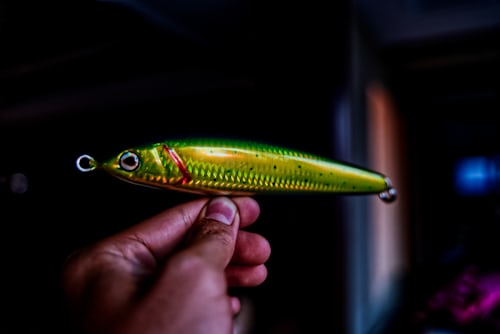
Saltwater Specific
With little exception, surfing is mostly done in saltwater. For this purpose, it is important that your lures can withstand the corrosive nature of seawater. Many lures will say that they are usable for all water uses, but to be safe, it’s a good idea to shop for a lure designed specifically for ocean fishing. This will allow you to prevent a product that breaks down within a very short period of time.
Behavior
Since surf fishing is usually done from the shore or the pier, it is necessary to keep an eye on the action of the best lures for beach fishing. You’re going to be the driving force in the movement of the lure, not with the aid of the trolling engine. Try to adapt the behavior of your lure to the species of fish that you would like to capture. For example panfish are selective about the action of lure; they are more likely to bite a fast-moving or shimmering lure.
Color
There are so many options when it comes to color of the best lures for beach fishing. Although there is some debate about what the pallets are most powerful, go for a lighter color for a bright , sunny day on the beach. Try to adjust the color of your future catch to clear water.
The Best Lures For Beach Fishing
Our Top Pick

Product Name: Acme Kastmaster Lure
Product Description: The Kastmaster lure is one of the most famous lines associated with Acme. They come in several different colors and a few different types, each unique to the species of fish you might be looking for. Acme says that the Kastmaster walks the fine line between creating "wild lure action" and going through a line twist.
-
Durability
-
Ease Of Use
-
Angling Capability
-
Size
-
Worth The Money
Overall
Keeping in mind the previous segment, we have compiled a list of three top-of-the-line best lures for beach fishing that will contribute to the success of your surfing experience.
Acme Kastmaster Lure

Acme is a well-known and loved name among many anglers in the world of lures. They are known for offering a large, versatile range of lures that can be used in a variety of angling styles.
The Kastmaster lure is one of the most famous lines associated with Acme. They come in several different colors and a few different types, each unique to the species of fish you might be looking for. Acme says that the Kastmaster walks the fine line between creating “wild lure action” and going through a line twist.
The aerodynamic architecture was planned with long casting distances in mind, as they can fly far and fast with ease. Every lure is a tough, strong brass material, they designed it to withstand corrosion in saltwater as well as to be brittle and bend-resistant.
The size ranges from 1/32 oz, ideal for panfish, salmon, rain, and ice fishing, all the way to 4 oz size, which is suitable for striped bass, lake trout, pike, jacks, and musk.
More Information
Acme’s Kastmaster Line of Lures is a long-standing believer in many anglers playing with boxes. They perform well in a number of situations, making them a simple recommendation. Structurally, they are made of robust material that can have stable use for years to come. Be sure to read the summary of your lure clearly before you buy, as some users report that the lure they got was smaller than anticipated.
KIKITOY Saltwater Fishing Lures Inshore Large Hard Bait Minnow Lure

If you’re looking for a more economical alternative, these saltwater lures come in a pack of five for a great value at a low price. They come in five different colors to accommodate a range of water environments and shades. The colors are black and silver, red and yellow, blue and white, red and white, green and black.
Every lure is 5.5 inches and 0.8 oz, a good medium size for fishing between medium and large schools of fish. They are made of a high carbon steel treble hook, which is fairly durable — KIKITOY claims it “increases the fishing rate by 30%.”
The designs of the lure are excellent and each colorful body is designed to resemble a bait fish. They have weight shift balls in the body, making casts longer and faster, and a distinctive action that attracts a variety of fish.
More Information
KIKITOY’s five pack of lures is a pretty simple purchase that will certainly get the job done. While they’re certainly not the highest quality lures on the market, you get five in a box, which is perfect for checking the waters, or as a backup lure. The size and shape are a versatile combination that can attract a wide range of fish species.
Bomber Saltwater Grade Badonk-A-Donk High Pitch
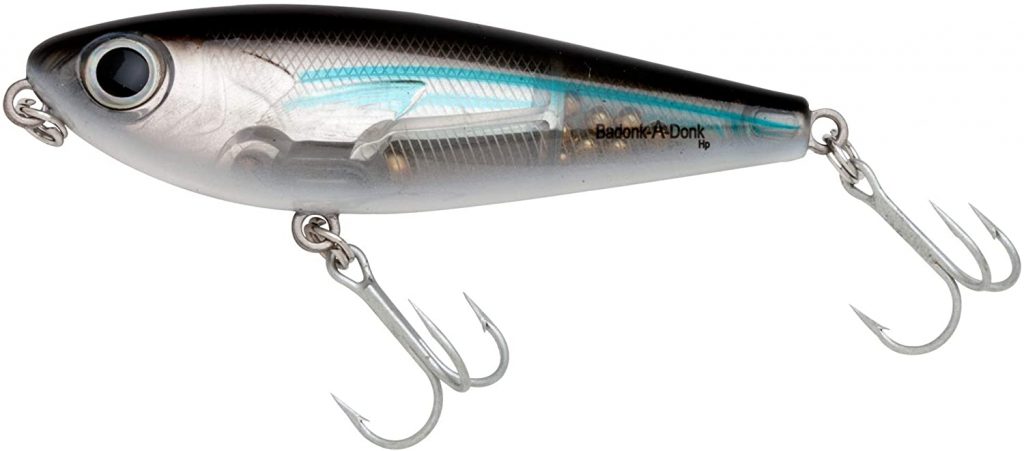
This lure gets its name from a pattern of motion. You can accomplish it by using this line and a twitch back and forth. From twitching the line from right to left, the angler can get a sashay-like swimming movement that “drives bull redfish and gator trout wild.”
The lightweight nature makes it super simple to cast a mile, even in high winds on the coast. It also features intense, inner rattling, which can catch the attention of a catch in turbulent conditions with strong waves and wind. The lure comes in many colors and designs, all intended to attract saltwater species, but it can also be used in freshwater. They are also corrosion resistant and are made of saltwater grade hooks and hardware.
This very unusual lure offers an “explosive action at the top of the water,” which is very useful in attracting fish. This product is a great choice for angling on days with less than optimal weather conditions, as the ability to ratchet and shift will capture the attention of disturbed fish.
More Information
This special hook with a dumb name is a perfect choice for anglers with a little more knowledge in walking-the-dog style action. It’s a perfect choice for surf fishing because it’s super corrosion-resistant and can hold its own after use in the ocean. While this isn’t the most versatile option, because it’s pretty big and not a perfect beginner’s selection, it features a great swim action and could help you catch your next trophy fish.
Final Words
This is a fast look at our top three best lures for beach fishing and an arsenal that should see you hooked up to a wide range of species anywhere in the world. Don’t forget to keep an eye out for birds, bait and water movements produced by structures such as rock, dots, gutter openings and headlands, and also remember to change up your presentation and retrieves before you make the bite happen.
All the best with your beach fishing trips, it’s a beautiful place to discover, and fishing can always be as cold or as hurried as you want to do.

